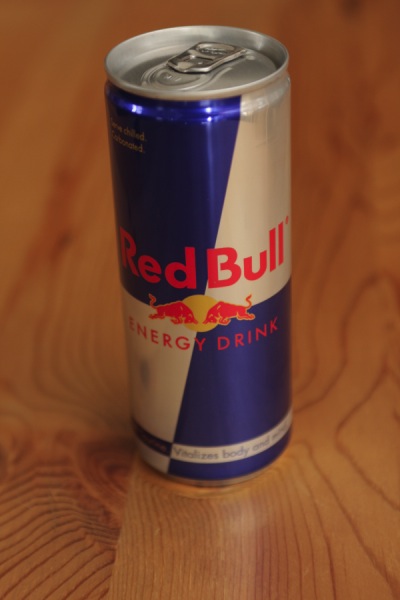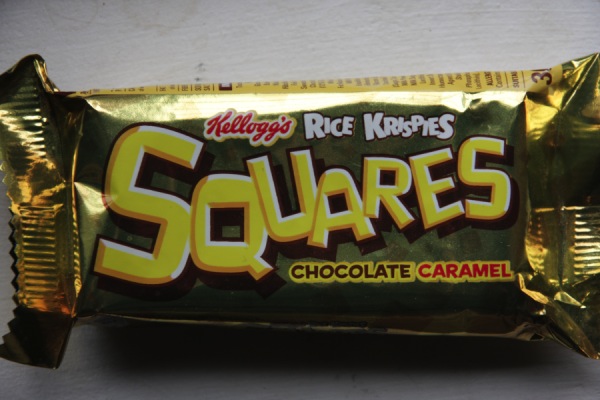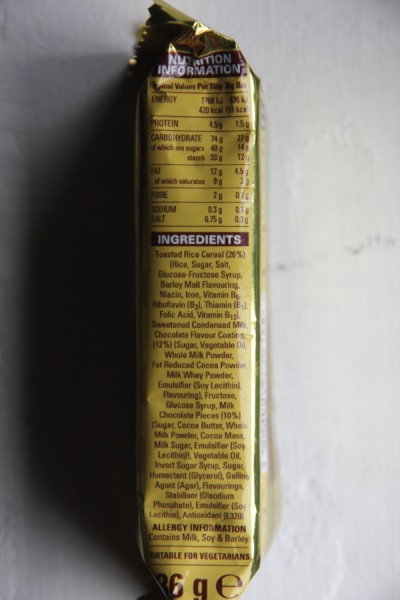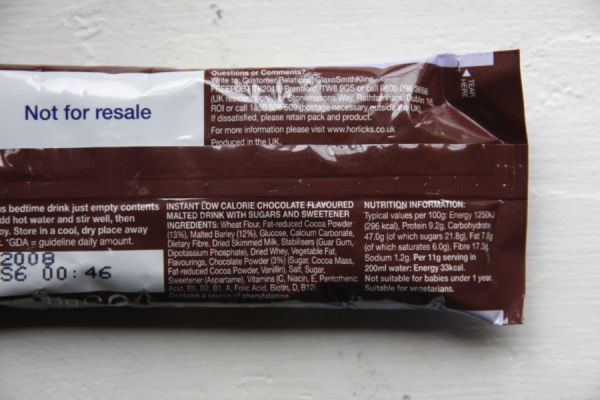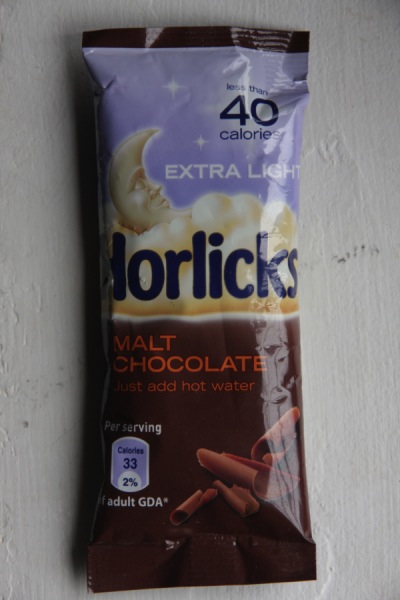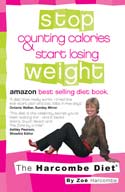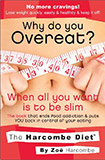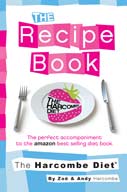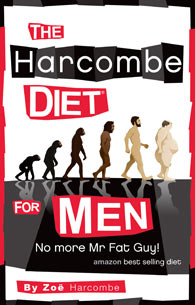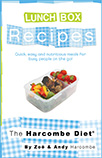Many thanks to Andy Harcombe for these photo shots of ingredient lists and
products. (www.andyharcombephotography.co.uk)
Let’s Start with Weight Watchers (Frozen) Chocolate Brownies: |
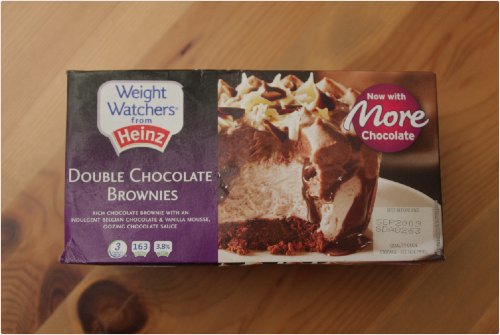 |
| You have to see the ingredients in this product to believe them. Hopefully you can make them out in the photo below – 10 lines of ingredient after ingredient.See how many times you can count the words “sugar”, “glucose”, “fructose syrup” (and remember the ingredients must be listed in order of largest first).
Do you really want to eat emulsifier, soya lecithin, whey powder and inulin? Do you even know what they are?! Other delights, towards the end, are pork gelatine (veggies beware) and locust bean gum. In my opinion, this product is about as bad as processed food can be.
One of these (frozen) chocolate brownies is 163 calories. I can hardly think of a worse way to consume 163 calories. PLEASE don’t be this horrid to your body. |
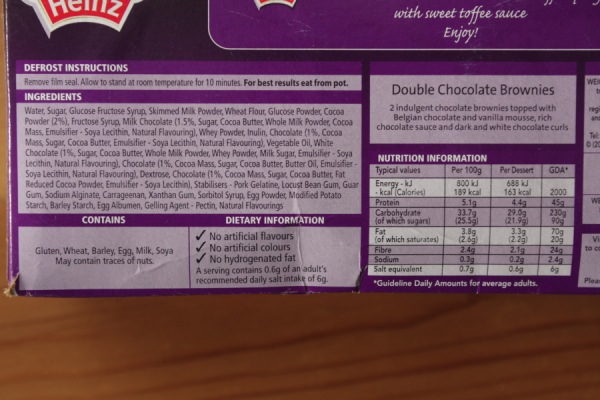 |
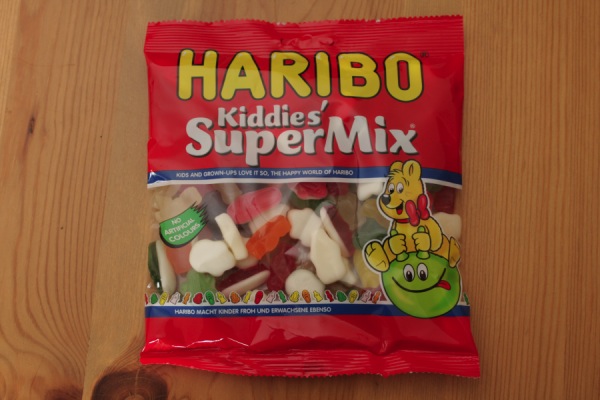 |
| You may not be able to make out the slogan on the front of the packet. It says “KIDS AND GROWN-UPS LOVE IT SO, THE HAPPY WORLD OF HARIBO.” In my personal opinion, grown-ups who love kids would not give them Haribo sweets. I bought this bag of sweets to take the product photo and to get the ingredients list and I have since thrown the entire contents away. I simply would not give anything so lacking in nutrients to any human being.
See, again, if you can make out the ingredients list below (the first words are in English – the ingredients list comes in several different languages, so that many unfortunate children across the world can have access to this concoction of sugar and not much else). They are, in order of largest ingredient first, glucose syrup, sugar, gelatine (non veggie), dextrose, citric acid, flavourings, fruit & plant concentrates, colours (including carmine, which is made from crushed insects), beeswax, invert sugar syrup.
On the back of the packet, there’s the “Food facts” where the product (proudly?) points out that it is ‘gluten free’, ‘nut free’, ‘milk free’ and ‘soya free’. That’s because it’s free of pretty much anything except sugars and gelatine (gelatine being crushed animal parts)! It could also tick boxes to say that it is vitamin free or mineral free! I would love anyone from Haribo to tell me if there is a single nutrient in the whole pack (other than the protein from the crushed animal bones) – or is the entire product pure empty calories?
Grown-ups – surely you can find a more nutritious ‘treat’ than this to give children?! Children will grow up healthier, if they never think of empty calories as ‘treats’. |
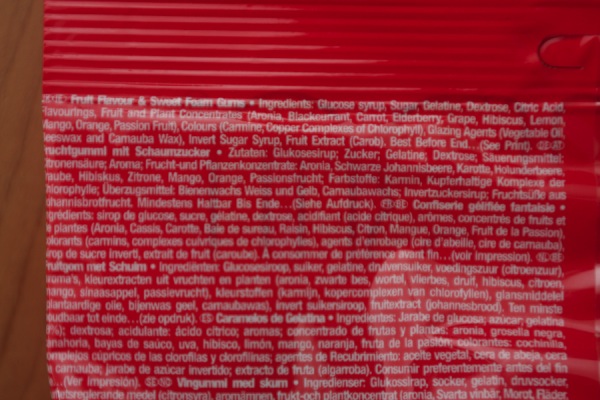 |
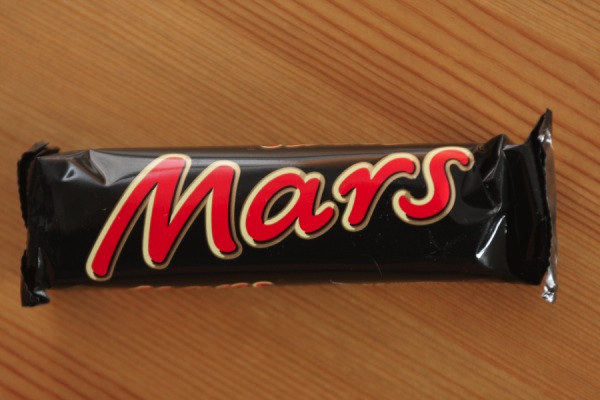 |
| The famous Mars Bar (R) has 259 calories in the 58g bar. The packet says “To be enjoyed as part of a healthy, active lifestyle.” You will need to be very active to ‘enjoy’ this food regularly, without it ending up on your waistline. A Mars Bar (R) can probably be consumed in little more than a minute and it can take over an hour of continuous running to burn off! Best not to eat it in the first place.
The ingredient list is sugar, glucose syrup, skimmed milk powder, milk fat, vegetable fat cocoa butter, cocoa mass, lactose, demineralised whey powder, fat reduced cocoa, barley malt extract, emulsifiers, salt, egg white, hydrolysised milk protein, natural vanilla extract.
The main issues that I have with confectionery bars (of which the Mars Bar (R) is one of the best known) are:
a) they are processed foods and your body is much better off with real food – food in the form nature intends us to eat it;
b) they are often laden with sugar and man made fats and things that you simply don’t need in your diet; and
c) for this particular example, the Mars Bar, apart from the milk products, this is pretty much empty calories (and you’d be better off consuming normal milk than skimmed milk powder and milk fat).
An average size woman, needing c. 2000 calories per day, would consume 1/8th of her daily needs with just 1 Mars Bar and not get much nutrition in return for these 259 calories. She could, instead, have a really large tuna salad for close to this number of calories and that would have massively more vitamins and minerals. |
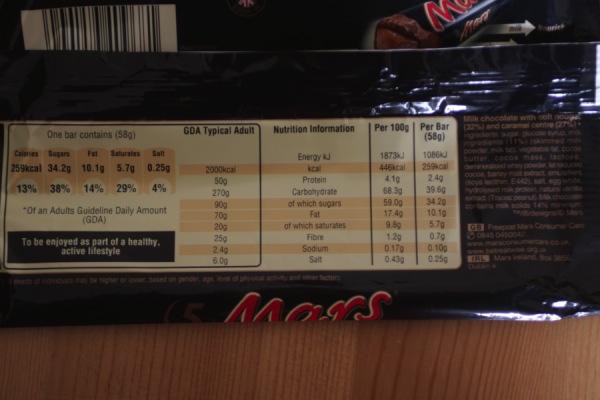 |
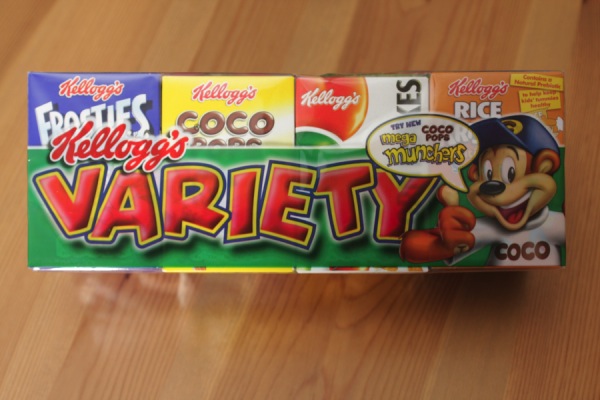 |
| Above is a picture of a Kellog’s “8-variety” pack of cereals. Below is an example of one of these small packets of cereal – Coco Pops. You should be able to see the ingredients on the packet below. I have 3 main issues with sugary breakfast cereals:
1) They are strongly marketed towards children, with adverts and toys and characters, which appeal to children. Every person, and especially a child, is better off without sugar and empty calories to start the day and it would be lovely to see porridge or 100% whole-wheat as the first choice for cereal for children;
2) As with almost all processed food, the sugars are listed individually, so that sugar per se doesn’t necessarily head the list of ingredients. In all but one of the varieties in this multi-pack, both sugar and glucose-fructose syrup are contained (the Rice Krispies multi-grain has caramel as a second sugary ingredient instead). If the sugars were all ‘lumped’ together, it would give a more accurate picture of just how much sugar is in this manufactured cereal;
3) Cereals love to claim “fortified with vitamins” and all these cereals have niacin, iron, and some of the B complex vitamins. Any person would still be better off with a good multi vitamin and mineral tablet (with the full range of vitamins and minerals, and not just a few) and a bowl of sugar free cereal instead. |
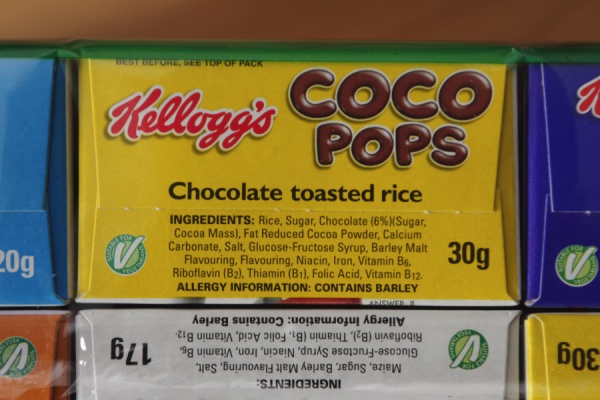 |
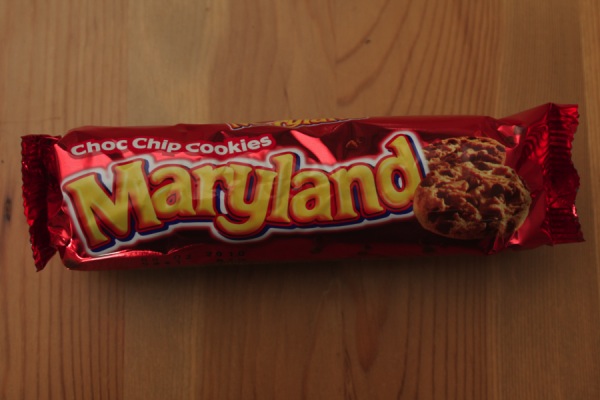 |
| Above is an example packet of biscuits. Biscuits are one of the most commonly craved foods (for their wheat and sugar). I could have picked any packet from the shelf – this packet of Choc Chip Cookies has fairly typical ingredients (shown in the next photo below).
Notice, again, how all the sugars are separated – if grouped together, it is likely that the sugar in the chocolate chips, the sugar in the biscuit and the inverted sugar syrup would together be the largest ingredient.
Notice also the other things that you would be putting in your body, if you ate these biscuits. If you don’t know what emulsifier, whey powder, ammonium hydrogen carbonate and sodium hydrogen carbonate are, do you really want to be eating them?
I do not believe that people who crave biscuits can eat them in moderation. One biscuit has 57 calories – I bet you could munch your way through a few hundred calories before even thinking about it. If you crave biscuits, wheat and/or sugar, you need to stop eating them. You can’t be a food addict ‘in moderation’, just as an alcoholic can’t have one drink and leave the rest of the bottle. |
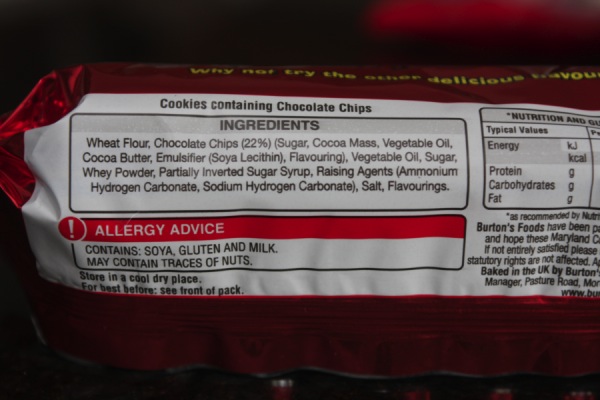 |
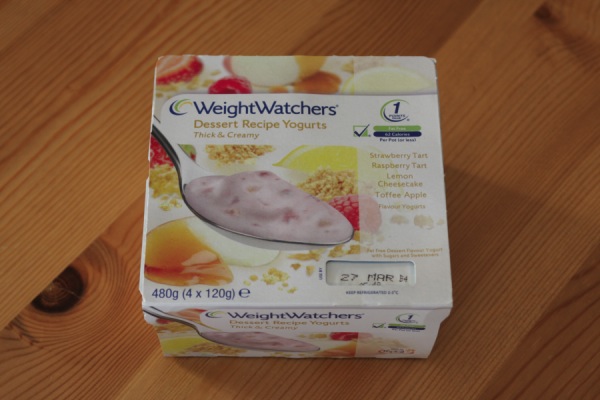 |
| This pack of Weight Watchers yoghurts (above) cost just £1 for 4 and each pot has between 56 and 62 calories. What a bargain and a great weight loss product you might think – only if you buy into the calorie theory and not if you have any commitment to eating real food, as nature intended it. What amazes me is how many processed ingredients they can get into each tiny pot. If you can’t see the ingredients below (try zooming in) – the strawberry one has (in order) fructose-glucose syrup, biscuit (egg, wheat flour, maize, wheat starch, water, yeast, iodised salt), Gelatine (crushed animal parts), modified maize starch, flavourings, cochineal (more crushed animal parts), guar gum, locust bean gum, carrageenan, acidity regulators: citric acid, sodium citrate, sweeteners: aspartame, acesulfame-K.
This is a brilliant example of how calorie counting leads to the three conditions that cause insatiable food cravings. In this concoction of just 56 calories we have wheat, dairy, sugar (the main food intolerances), yeast, sugar and biscuit (feeds Candida beautifully) and sugar, sweetener and other things that any ‘hypoglycaemic body’ is not going to recognise and process effectively.
I really am at a loss sometimes to wonder why anyone would put so many processed ingredients into their body at all – let alone for so little fuel/petrol. |
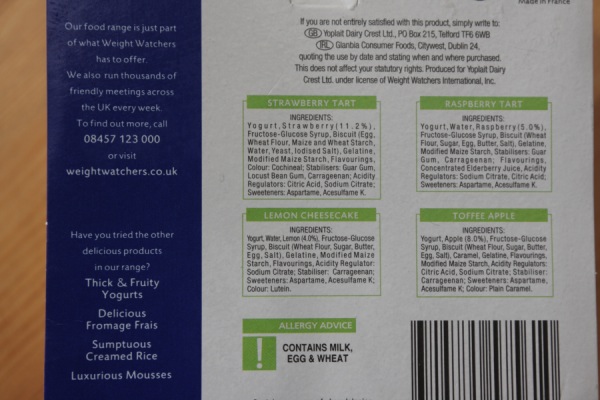 |
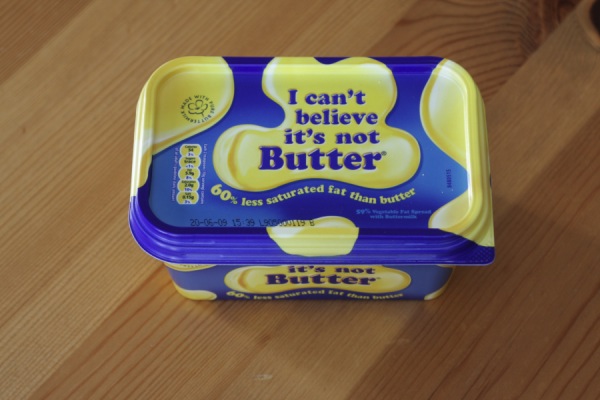 |
| The product above is one of many alternatives to the real food called butter. They are called spreads, margarine and this one, originally, is called “I can’t believe it’s not butter”. Well, I can, because butter has just one ingredient – butter! This manufactured food above has vegetable oils, buttermilk, salt, emulsifiers, mono and di-glycerides of fatty acids, sunflower lecithin, preservative: potassium sorbate, vitamin E, citric acid, flavouring, colour, beta-carotene, vitamins A and D.
Why would you want over 10 ingredients when you can have just 1? Is it because this has less saturated fat than butter? This is just good marketing. Saturated fats are not the baddies – transfats and manufactured fats are the worst fats of all. Transfats are even banned in Denmark, Switzerland and New York.
Don’t forget, in The Harcombe Diet you don’t have butter, or spreads, on bread, as you don’t mix fats and carbs. So manufactured pots of spreads have no place in The Harcombe Diet. Butter does have a place – it can be used in cooking with fat meals e.g. scrambled eggs, or, you only need a tiny scraping of butter as a delicious way of cooking fish (baked in tin foil with herbs and a dash of butter). |
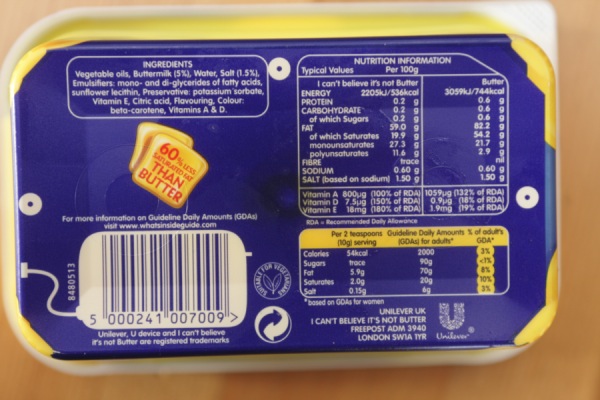 |

